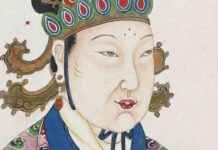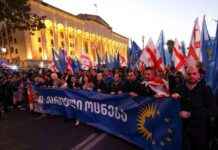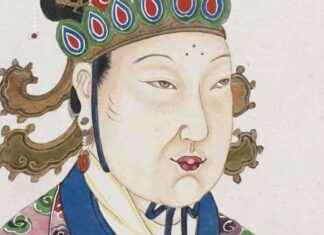The journey was dangerous. It was only supposed to lead from Tel Aviv to Jerusalem, barely 70 kilometers – but the majority of it led through Arab settlement areas and here snipers in the hills shot at every car. “In the last few weeks, almost 100 people had been killed or wounded on this road,” young Chedva Margalit told her family about the events of December 26, 1947.
Since the United Nations proposal four weeks earlier to divide the Palestinian landscape into an Arab and a Jewish state, Arab groups have attacked Zionist settlers en route to their designated areas. West of Jerusalem, Arab guerrillas had taken control of the only road out of Tel Aviv and were firing on convoys of Jewish new arrivals.
In the early morning of this Friday, several dozen Jews gathered in front of Tel Aviv’s first agricultural school, the Mikveh Yisrael. Three or four buses, some private cars, and an armored truck belonging to the Jewish police were to form a convoy and push through together to Jerusalem. In command was the gripping Golda Meyerson, who had not yet shortened her name to “Meir”.
“Somehow Golda’s determined facial expression gave us courage,” wrote Chedva: “She was sitting in one of the private cars, her black hair tied in a bun, on which her well-known, wide-brimmed black hat was sitting.” Actually, Hans Beyth should also be in one of the cars sit, the head of youth immigration Children’s Aliyah. But he gave up his seat to an American and boarded one of the youth buses instead.
British soldiers checked the convoy several times and looked for hidden weapons because, despite the well-known danger posed by the irregulars, it was officially forbidden to carry pistols or rifles. As the small column approached the hills west of Jerusalem, a strange thing happened: “Suddenly the soldiers fired shots in the air, apparently to alert the Arabs to our approach. Then these so-called British security police raced on and abandoned us. We were alone and vulnerable.”
Soon after, the raid began. “The gunshots sounded so much like firecrackers that for a moment I couldn’t understand the gravity of what was happening,” the young woman recalled: “Everyone crouched down and suddenly I saw blood running down the aisle.” The driver of the bus she was on had been wounded, but he steered his vehicle doggedly; a man named Yossef helped him and calmly tied off his arm with a handkerchief and a fountain pen for leverage. Chedva Margalit saw it all through a veil.
“A single shot brought me back to reality. The man sitting a few rows in front of me had fired a pistol through the window. A bullet shot through the stones hit him and punched a clean hole in the middle of his forehead.” This dead man, one of three during the convoy’s journey, was Hans Beyth.
Born in 1901, came from a German-Jewish family and was already involved in the Jewish youth movement before the First World War, which naturally existed alongside Christian and atheist movements. But the increasing anti-Semitism during the war ensured that many members committed themselves to Zionism, i.e. Theodor Herzl’s goal formulated in 1896 to create a Jewish state in Palestine. Beyth also saw the future of the Jews in the Holy Land.
After school he began an apprenticeship at a bank in Hildesheim and quickly completed it with good results; he then became a skilled and successful stockbroker at various Berlin banks. In 1923 he traveled to the British Mandate of Palestine for the first time. In 1925 he planned to set up a canning factory on a kibbutz there as the nucleus of a Jewish industry. But he was ahead of his time: the machines bought with borrowed money rotted away because his visions were illusory without his presence on site.
For Hans Beyth, this experience meant getting involved himself. When the Hitler government ousted Jewish stockbrokers from their profession in 1934, he initially supported newly founded Jewish institutions and emigrated himself in 1935. In Palestine he set about promoting the emigration of children and young people and, as an experienced organizer and financier, set up the appropriate structures on a solid basis and thus became the most important collaborator of the American Zionist Henrietta Szold.
Together they saved thousands of young people from the Holocaust by organizing their – often illegal – immigration to Palestine. The most famous single case was the rescue of the “Orphans of Tehran”. In 1942, a good 700 Polish-Jewish children were stranded in a home in the Persian capital, separated from their parents; they had fled eastwards before the German attack on Poland and had been taken further and further to Asia.
Szold and Beyth prevailed against competing Jewish organizations, including Orthodox ones, who, in their view, were offering help not for the sake of the children but primarily for political reasons. Eventually the children and their companions were taken across the Red Sea to Port Said, where Hans Beyth was waiting for them.
Henrietta Szold died in Jerusalem in early 1945 at the age of 84 and was succeeded by Hans Beyth. He also concentrated on children, whom he and his collaborators fetched from the displaced persons camps all over Central Europe and often smuggled in without the eyes of the British mandated power. If there were foreseeable problems, Beyth was always at the forefront. Just like that on December 26, 1947. Of course he tried to defend “his” young people against the ambush attack. But this time it cost his life.
You can also find “World History” on Facebook. We are happy about a like.








